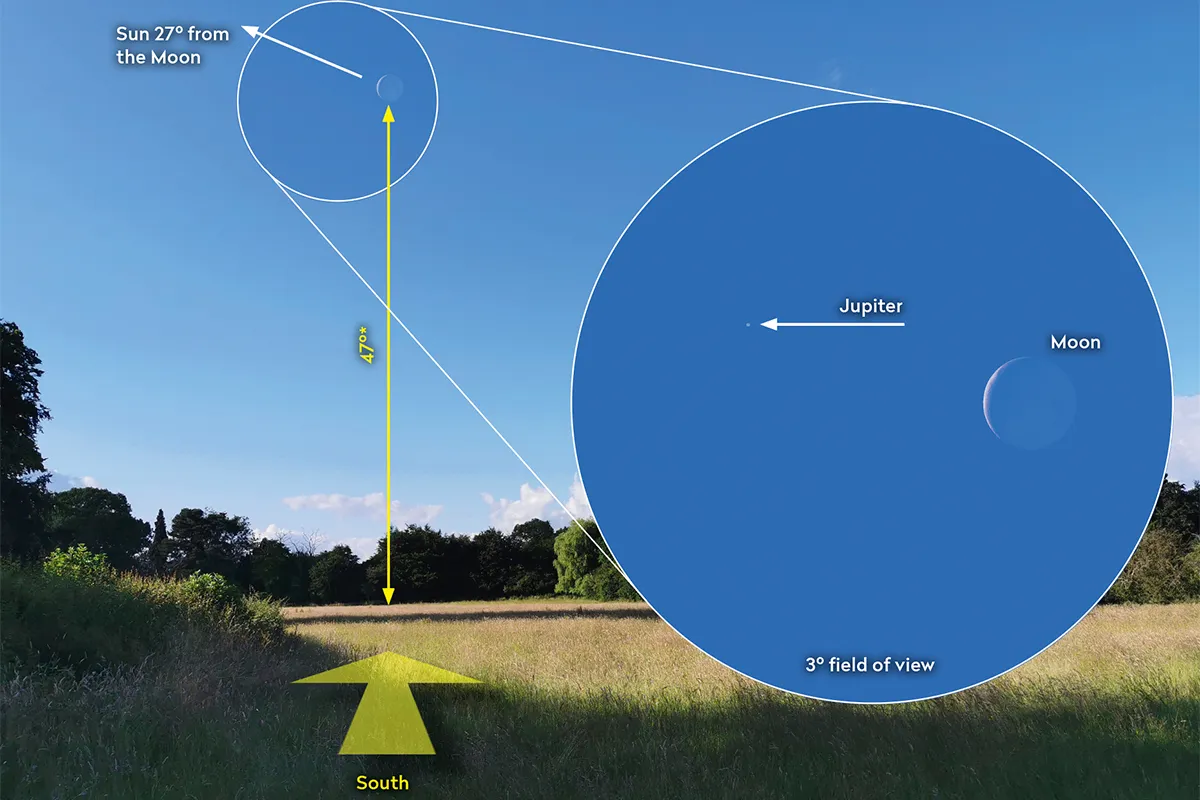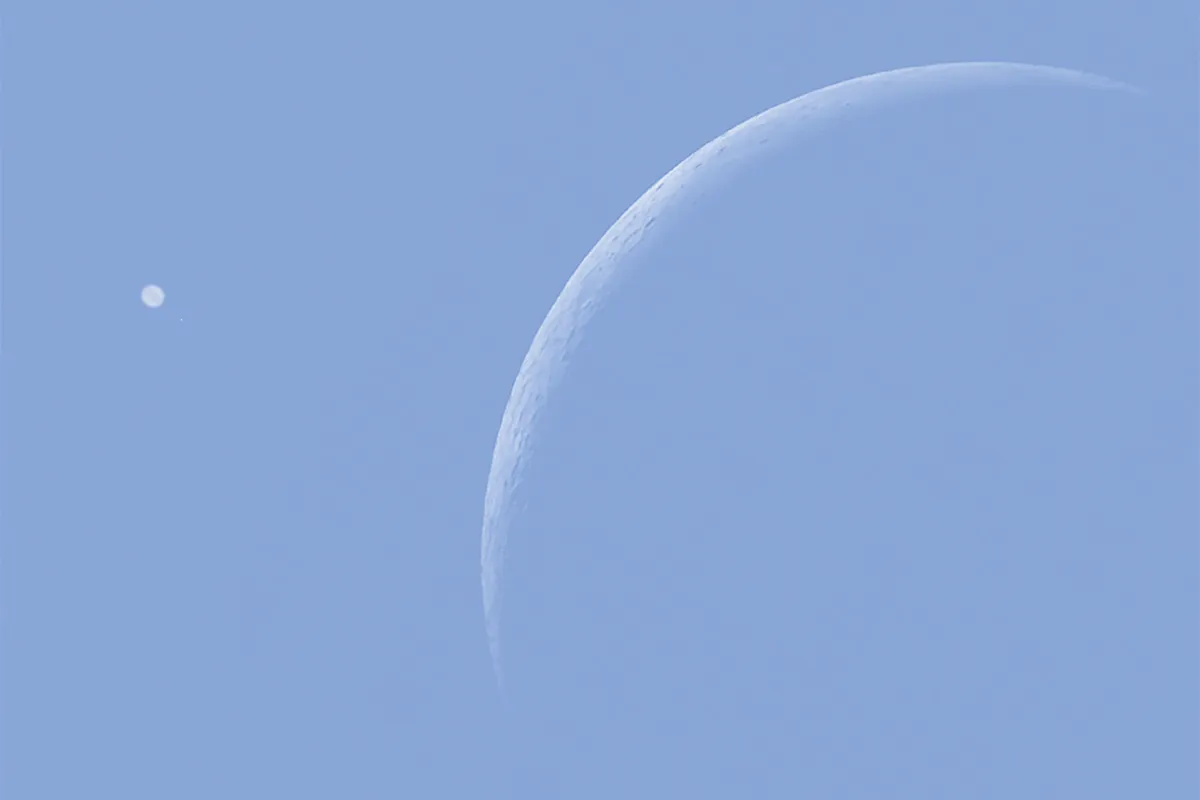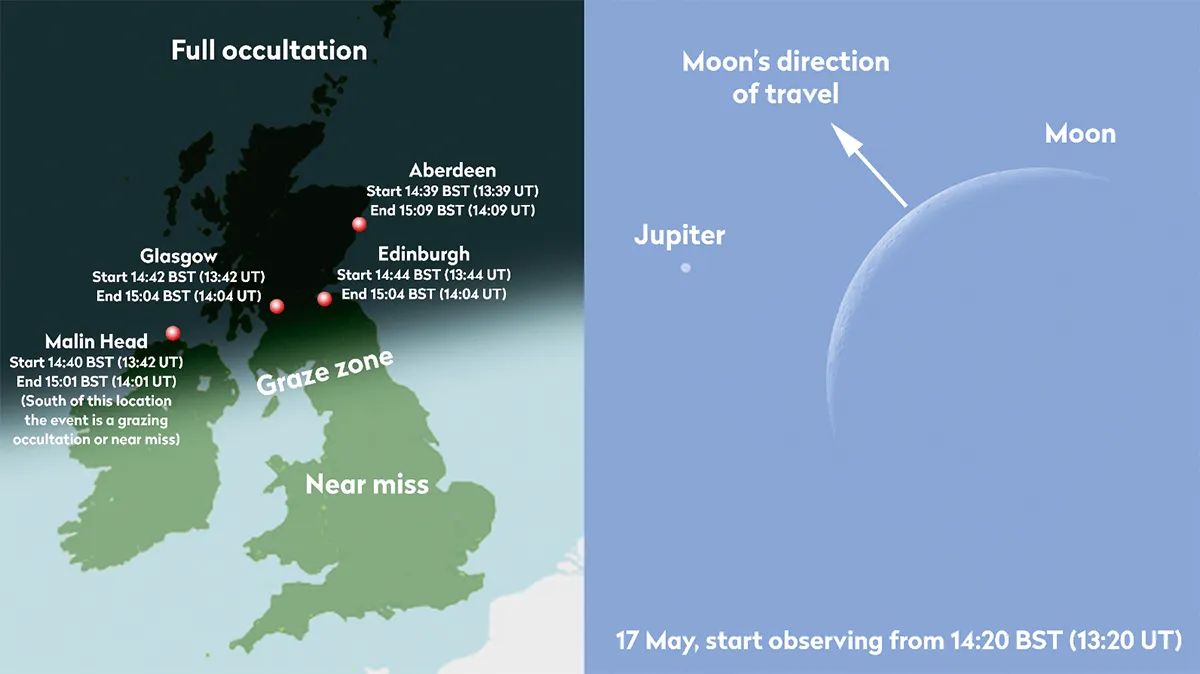There’s no denying that the occultation or close pass (depending on your location) event with the Moon and Jupiter on 17 May will be hard to observe, as it takes place during daylight hours.
However, given clear skies, Jupiter can definitely be seen in a blue sky, either using binoculars or through a telescope.
A good challenge is to go one further and try to photograph the planet.
In this guide we'll show you how you can capture the close pass or - if you're in the right location - the lunar occultation of Jupiter on 17 May.
For more astronomy advice, sign up to receive the BBC Sky at Night Magazine e-newsletter and listen to our monthly Star Diary podcast.

What equipment to use
A daylight sky will greatly reduce contrast in the visible spectrum, but as long as you can locate Jupiter, switching to an infrared pass filter combined with an infrared-sensitive camera should make it possible to improve the view.
If you don’t have such equipment, don’t worry.
It’s still possible to get an unfiltered shot of the planet using a DSLR, but you may need to work a bit harder to separate its dim, low-contrast disc from the sky.
Find out more in our guide to DSLR astrophotography.

Finding the Moon during daylight
The event on 17 May will have the benefit of the Moon being nearby, but even this may be challenging.
With a waning crescent phase at 7% illumination, the Moon too will appear quite indistinct against the blue sky.
There are various ways to locate the Moon during daytime. The easiest is to catch it earlier as it rises in darker skies.
On 17 May 2023 this will happen around 04:30 BST (03:30 UT) from the centre of the UK.
Using a polar-aligned equatorial telescope mount, you’ll need to set the drive to its lunar rate, then centre the view on the Moon’s disc.
If you’re unsure about the precision of the polar alignment, you’ll need to schedule in periodic checks.
Another method is to estimate where the Moon will be at a set time and try to locate it that way.
At 11:24 BST (10:24 UT), the Moon will appear at an altitude around 47° due south.
This should give you enough information to get into the general area.

As ever, take great care when looking as the Sun will be up and relatively close by.
Observing from safely inside the shadow of a building so the Sun can’t be seen is a good strategy to keep safe.
Viewing the Sun with the naked eye is extremely dangerous, so care must be taken at all times.
Once you have managed to locate the Moon, Jupiter should be a lot easier to find.
Just be prepared for its disc to be extremely low in contrast, almost a ghost of its nighttime self.
Use the Moon as your focus target, taking care to focus as accurately as possible.
The sky can be bright, but don’t allow it to over-expose or you won’t be able to recover the planet.
Once taken, adjust the levels of the image using your favourite image-editing program (have a look at our list of the best free astronomy software), darkening the sky with the mid-point slider and tweaking to bring out weak Jupiter at its best.
Did you manage to see or photograph Jupiter's close pass or occultation? Let us know by emailing contactus@skyatnightmagazine.com.
